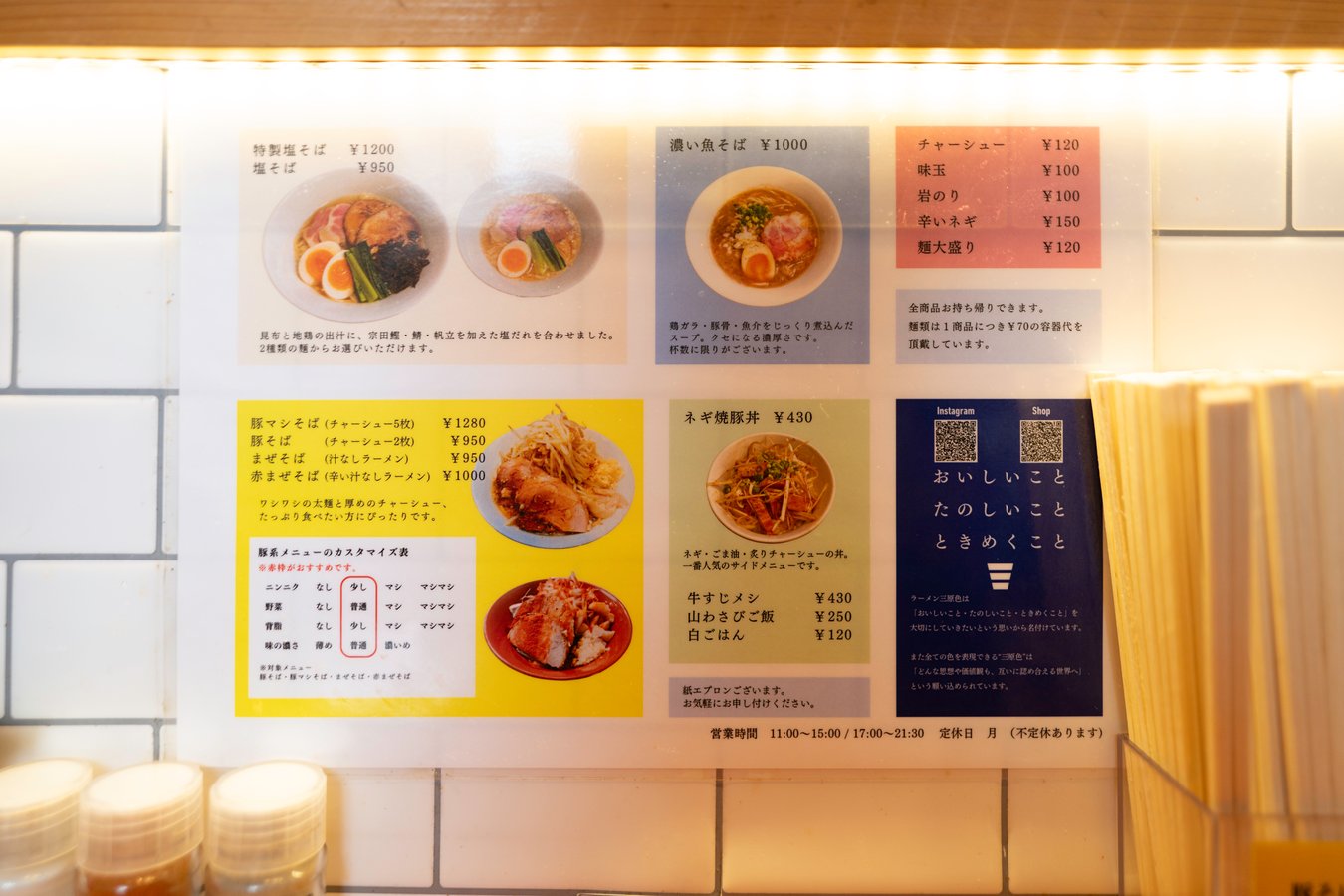How to Order Ramen in Japan
Most ramen shops in Japan use a ticket machine system. Insert cash, select your ramen, and hand the ticket to the staff after taking a seat. Staff may ask about your preferences for seasoning, garlic, broth, and more. Each shop has its unique style, so be ready to explore.
Types of Noodles
Ramen noodles vary in shape and texture. Common types include:
- 太麵 (Futomen): Thick noodles
- ちじれめん (Chijiremen): Wavy noodles
- 細麵 (Hosomen): Thin noodles
Types of Soup
Ramen soups are just as diverse as the noodles. Here are some common bases:
- 醬油 (Shoyu): Soy sauce-based, light and flavorful
- 豚骨 (Tonkotsu): Pork bone-based, creamy and rich
- 煮干し (Niboshi): Dried sardine-based, ranging from light to heavy
- 鳥白湯 (Toripaitan): Chicken bone-based, similar to Tonkotsu
- 塩 (Shio): Salt-based, light and delicate
- 味噌 (Miso): Fermented bean paste-based, hearty and robust
Customizing Your Ramen
Once seated, staff may ask for your preferences. Use these phrases to specify:
- Noodle Hardness: かため (Hard), 普通 (Normal), やわらかめ (Soft)
- Soup Thickness: こってり/濃いめ (Thick), 普通 (Normal), あっさり/薄め (Light)
- Oiliness: 多め (More), 普通 (Normal), 少なめ (Less)
Example: めんをかたでお願いします (Men wo kata de onegaishimasu) – “I’d like my noodles hard.”
Serving Sizes
Choose a portion size that fits your appetite:
- Regular: 並盛り (Nami Mori)
- Medium: 中盛り (Naka Mori)
- Large: 大盛り (Oo Mori)
- Extra Large: 特大 (Toku Dai)
- Special: 特製 (Toku Sei)
Common Toppings and Condiments
Enhance your ramen with toppings and condiments:
- Seaweed: のり (Nori)
- Green Spring Onion: 青ネギ (Aonegi)
- Chashu: チャーシュー (Braised Pork)
- Soft Boiled Egg: 味玉卵 (Ajitama Tamago)
- Bamboo Shoots: メンマ (Menma)
- Pickled Ginger: 紅しょうが (Beni Shouga)
- Noodle Refill: 替え玉 (Kaedama)
- Spices & Oils: 七味唐辛子 (Shichimi Tougarashi), 胡椒 (Koshou), 酢 (Su), 辣油 (Raayu)
These options allow you to create a bowl of ramen tailored to your preferences.



